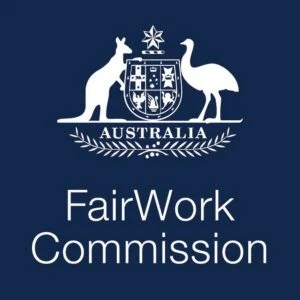Under the Parental Leave Act 2010, it is generally accepted that a significant proportion of the population will qualify for a government-funded payment of (up to) 18 weeks paid Leave at the minimum weekly wage. There are plenty of workplace agreements that are greater than this minimum entitlement, so you will need to look to your own industrial agreement/contract when considering what rights apply in your situation. Father/partner pay are paid at the same minimum wage, though for 2 weeks.
As the Parental Leave Act is 366 pages in length, the key points to know are:
- If you have completed 12 months continuous service in your current employment, then you are eligible to apply for Leave.
- Casual employees are also eligible, and an entitlement will depend on your work hours and employment being regular and systematic.
- The concept of continuous service takes into account the standdown provisions and the like as a consequence of Covid, and so 12 months continuous service can occur over a period of 600 days (previously this was 392 days).
- If you earn more than $150,000 a year, then you may not qualify.
- Paid Leave is for a period of 18 weeks set at the minimum wage (currently $753.80 per week).
- You can take 12 months unpaid Leave and may request a further 12 months but must do so 4 weeks prior to the first 12 months expiring.
- If you are a couple, then the 24 months is a combined amount of time between you and not more than 8 weeks can be taken together.
- The National Employments Standards cover the primary carer for such Leave but not the secondary carer.
- Parental Leave can start 6 weeks prior to the birth.
- The South Australian Long Service Leave Act 1987 doesn’t take into account your Leave for the purposes of your long service accruing – not even the 18 weeks that is part of the NES.
- You are entitled to go back to your pre-Parental Leave position, and you must be kept informed on any significant change in the workplace.
- On unpaid Parental Leave, you get 10 keeping-in-touch days and will be paid according to your normal wage (on a pro rata basis).
- You do not need to use your keeping-in-touch days but if you do decide to use them, then you can commence from 42 days post birth of your child.
While Australians are most fortunate to have Parental Leave, the current scheme still has some issues.
Long Service Leave entitlements should not be put on-hold for primary carers, usually mothers, and seems to be the only Leave that is precluded from South Australian Long Service Leave that is also a primary right under the Fair Work Act. The irony is that this is indeed discriminatory to (at this stage) mothers. And if a primary carer has more than one child, then it’s not just 18 weeks that primary carers would be excluded, but instead it is double triple, quadruple etc that amount. The more children you have the more adverse impact.
The Dad and Partner Pay is an entitlement under the Paid Parental Leave scheme which provides fathers/partners with up to two weeks of government funded pay at the National Minimum Wage. It was introduced back in 2013 and was designed to encourage fathers to spend more time with their new-born children.
Unfortunately, the current Parental Leave system is not reflective of modern Australian views on family dynamics. Two weeks’ worth of paid Parental Leave (amounting to $1507.60) for any parent is quite insufficient.
The issue is that there exists no shared Parental Leave approach. Mothers are typically deemed primary carers and as such, are eligible for up to 18 weeks of paid Parental Leave. Fathers/partners on the other hand, are often labelled secondary carers, a categorisation which precludes that parent from accessing the maximum parental entitlements. The same attitude is taken by most organisations which provide very limited support for secondary carers.
It could be said that the current scheme is reflective of an outdated family model: mother staying at home to raise the children, whilst the father works to provide an income. If this is the case, it would seem this is concerningly inconsistent with modern views of family, and by extension, equality. Allowing the Dad and Partner Pay to be increased or a shared Parental Leave scheme to be implemented would provide families with adequate support and equal opportunity to bond with their new-borns at home during such a critical time.
Parental Leave is a vital employee entitlement that should reflect modern family views. Parental Leave that supports both parents equally would reduce the stigma and encourage more fathers to spend time with their new-borns, as well as dismantling cultural, gendered or financial barriers that can prevent parents from caring adequately for their children. In a time where we all have less and less time to spend with what matters the most, our families, I think we can all agree that this would be the ideal Parental Leave model for all South Australian employees.











